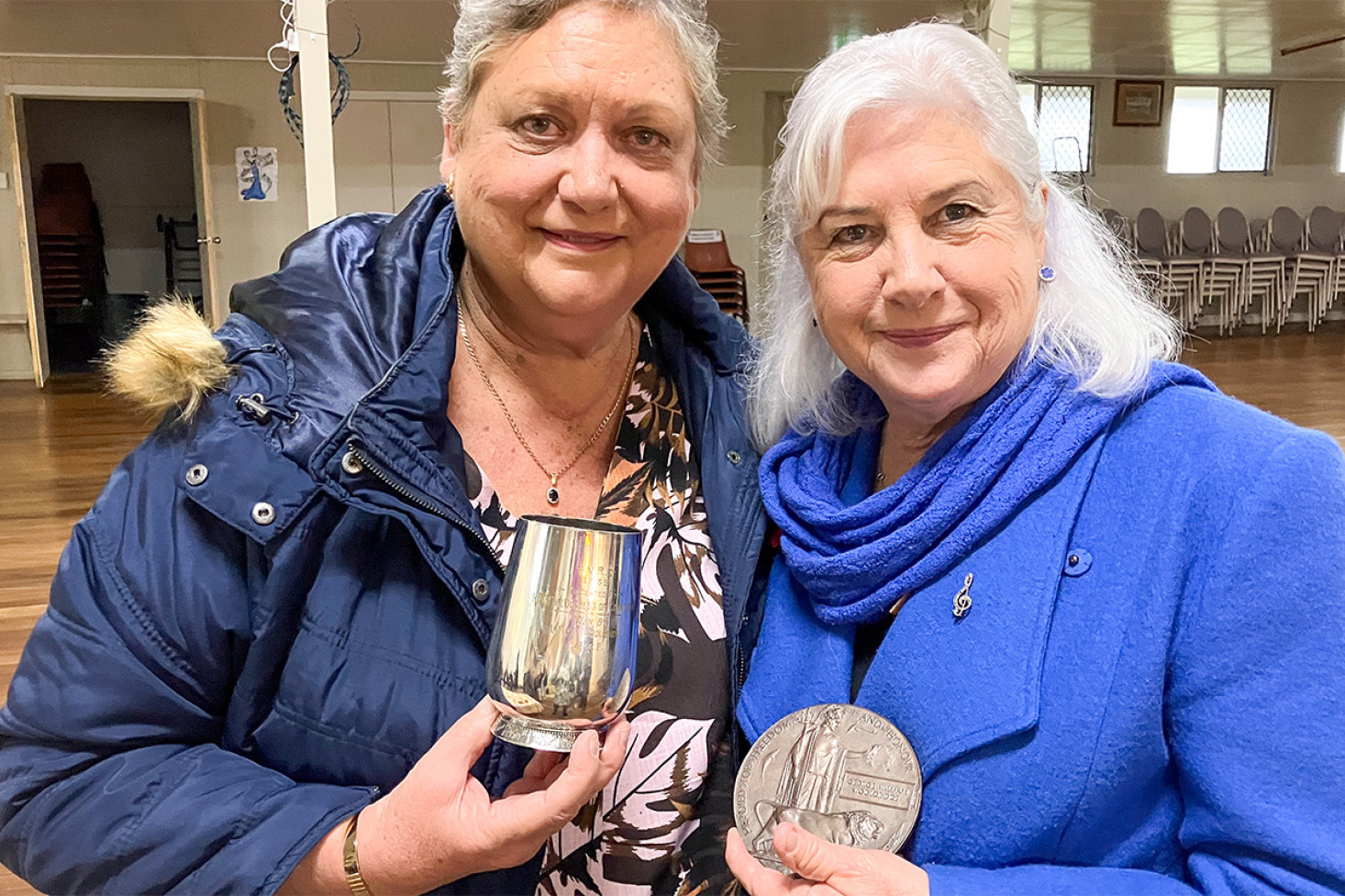Community & Business
8 May, 2025
George Wooldridge’s Dead Man’s Penny
With Anzac Day still fresh in our minds, it is timely to examine the manner in which the Australian Government communicated and honoured the death of servicemen to their families.

Sergeant George Wooldridge died fighting in the muddy trenches of France on 14th November 1916.
George was born in London and moved to Australia at a young age, growing up variously at Westbrook, Irongate and Rossvale (both near Pittsworth) and Toowoomba. He was a pupil at Bunker’s Hill State School.
George is believed to have been eighteen years of age when he enlisted in Toowoomba on 14th April 1915.
His enlistment in the armed services came just before the Anzac landing at Gallipoli and he had a letter of consent from his parents as he was under age.
Only five weeks after enlistment he found himself on a troop ship leaving Brisbane and by September found himself in the Gallipoli trenches.
He lasted only three months at Gallipoli before being evacuated to a hospital in Egypt with trench feet and bronchitis.
After a short recovery George was hospitalised again with enteric fever (typhoid) but once again soon found himself on a troop ship, this time bound for the horrors of the Western Front in France in 1916.
George became involved in the fighting in the Battle of the Somme and was quickly promoted to Corporal then Sergeant by October but on 14th November 1916 he was reported as missing in action.
Wooldridge’s participation in the fighting of World War I lasted eighteen months.
His parents were notified by telegram that their nineteen year old son was missing in action but with no further clarification received George’s father contacted the army for more information.
Ten months later his parents received official clarification that their son had been killed in France on 14th November 1916.
Like thousands of other solders on the Western Front, George’s body was never found, possibly blown to pieces by an artillery barrage or buried deep in the mud in “no man’s land.”
His mother, Florence Mary Wooldridge, was granted a fortnightly pension of one pound ten shillings.
To add further pain to their loss they were told in August 1922 that they needed to abbreviate the inscription they had chosen for his headstone because it exceeded the sixty-six letter and spaces limit allowed by regulations.
In 1922 a commemorative bronze medallion was sent to the next-of-kin of soldiers who died in World War I with over 60,000 issued for Australians servicemen.
The medallion is inscribed with the words “he died for freedom and honour” along with the deceased soldier’s name.
No rank was inscribed to show the equality of each man’s sacrifice.
The Dead Man’s Penny as it became known also came with a scroll and a note from King George V.
“I join with my grateful people in sending you this memorial of a brave life given for others in the Great War.”
Nineteen year old Sergeant George Wooldridge eventually had his name inscribed on a wall at the Australian National Memorial at Villers Bretonneux in France.
The French people of the small town of Villers Bretonneux are very mindful of the sacrifice made by Australian soldiers when they liberated their town from German occupation during the war and a large sign in the playground of the primary school carries the words, “Do Not Forget Australia”.


